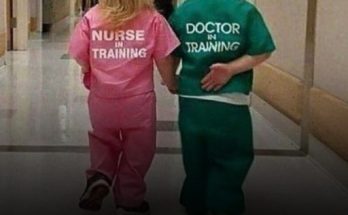In a bizarre and heartbreaking turn of events, a woman was discovered in hospital storage a full year after her family was told she had checked out. This case has raised serious questions about hospital procedures, patient safety, and communication within healthcare facilities. Let’s delve into this story and explore how such a devastating mistake could happen.
The discovery of a woman in hospital storage—long after her family believed she had been discharged—has sent shockwaves through the community and beyond. This incident underscores the importance of proper hospital protocols and the devastating impact when they fail.
It’s hard to imagine how a patient could go missing in a hospital, only to be found in storage a year later. But as we look deeper, it becomes clear that a series of miscommunications and procedural failures led to this tragic outcome.
One of the most glaring issues in this case is the breakdown in communication between the hospital staff and the patient’s family. The family was informed that their loved one had checked out of the hospital, leading them to believe she was safe. However, the reality was far from what they were told.
Hospitals are supposed to be places of healing and care, where patients can expect to be looked after with the utmost attention. However, when procedures are not followed, the consequences can be dire.
Documentation is key in any hospital setting. Without accurate and up-to-date records, patients can easily fall through the cracks, as tragically happened in this case.
This incident raises serious concerns about accountability within the hospital. Who was responsible for ensuring that the patient was where she was supposed to be? How did no one notice her absence for an entire year?
The emotional toll on the family in this situation is unimaginable. They were led to believe that their loved one had left the hospital, only to discover a year later that she had never left at all.
Being told that your family member has checked out of the hospital would naturally lead one to assume they are safe. The family was likely relieved at first, only to have that relief turn to anguish when the truth was revealed.
This incident undoubtedly shattered the family’s trust in the healthcare system. How could they believe in a system that failed them so completely?
This case also opens up a myriad of legal and ethical questions. What recourse does the family have? How can the hospital be held accountable for such a grave error?
Given the severity of the mistake, it’s likely that the family could pursue legal action against the hospital. Such cases often hinge on proving negligence, which in this situation seems apparent.
Beyond the legal implications, this incident also raises ethical questions about patient care. Hospitals have an ethical duty to protect their patients, and in this case, that duty was clearly breached.
In the wake of such a shocking event, the natural question is: How can this be prevented from happening again? There are several steps that hospitals can take to ensure that no other family has to endure such a tragedy.
One of the most crucial steps is to strengthen communication channels within the hospital. Ensuring that all staff are on the same page regarding patient whereabouts can prevent such devastating oversights.
Hospitals should implement rigorous checks and balances to ensure that every patient is accounted for at all times. This includes regular audits of patient records and whereabouts.
Modern technology offers numerous ways to track patients within a hospital. Implementing or improving patient tracking systems could go a long way in preventing similar incidents.
From electronic health records to RFID tags, technology can play a significant role in ensuring that patients are where they’re supposed to be, and that any discrepancies are immediately flagged and addressed.
While hospitals have a responsibility to their patients, the public also plays a role in advocating for safer healthcare systems.
Public awareness and advocacy can help hold hospitals accountable when they fail in their duty of care. The more attention these issues receive, the more likely it is that meaningful change will occur.
Media exposure of incidents like this can lead to public outcry, which in turn pressures hospitals and healthcare systems to implement necessary changes to prevent future tragedies.
Finally, it’s essential to support families who are affected by such failures. Providing them with the resources they need to seek justice and cope with their loss is crucial.
Families in these situations need both emotional and legal support. Counseling services, legal advice, and community support can help them navigate the difficult path ahead.
The discovery of a woman in hospital storage a year after her family was told she had checked out is a stark reminder of the importance of proper hospital protocols and communication. This tragic incident should serve as a wake-up call for healthcare systems to re-examine their practices and ensure that no other family has to endure such a heart-wrenching ordeal. By strengthening communication, enhancing patient tracking, and holding hospitals accountable, we can work towards a future where such tragedies are prevented.




